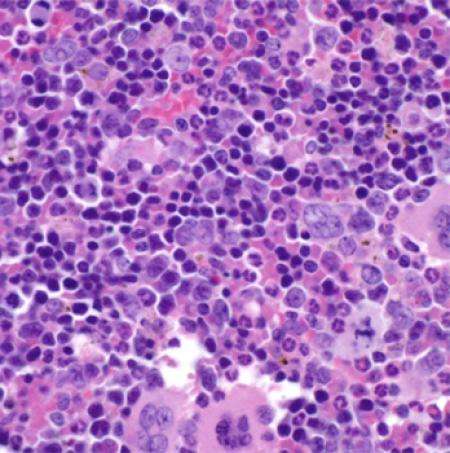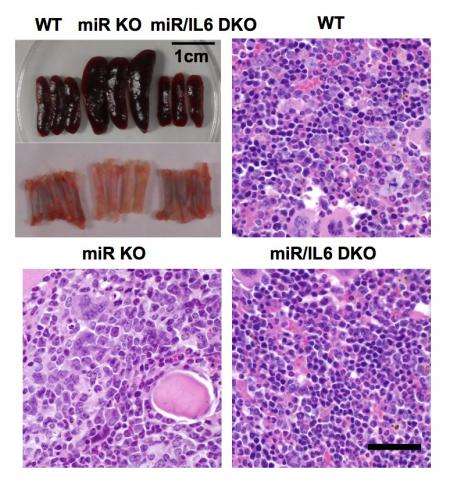Keeping stem cells strong: Biologists show that an RNA molecule protects stem cells during inflammation

When infections occur in the body, stem cells in the blood often jump into action by multiplying and differentiating into mature immune cells that can fight off illness. But repeated infections and inflammation can deplete these cell populations, potentially leading to the development of serious blood conditions such as cancer. Now, a team of researchers led by biologists at the California Institute of Technology (Caltech) has found that, in mouse models, the molecule microRNA-146a (miR-146a) acts as a critical regulator and protector of blood-forming stem cells (called hematopoietic stem cells, or HSCs) during chronic inflammation, suggesting that a deficiency of miR-146a may be one important cause of blood cancers and bone marrow failure.
The team came to this conclusion by developing a mouse model that lacks miR-146a. RNA is a polymer structured like DNA, the chemical that makes up our genes. MicroRNAs, as the name implies, are a class of very short RNAs that can interfere with or regulate the activities of particular genes. When subjected to a state of chronic inflammation, mice lacking miR-146a showed a decline in the overall number and quality of their HSCs; normal mice producing the molecule, in contrast, were better able to maintain their levels of HSCs despite long-term inflammation. The researchers' findings are outlined in the May 21 issue of the new journal eLIFE.
"This mouse with genetic deletion of miR-146a is a wonderful model with which to understand chronic-inflammation-driven tumor formation and hematopoietic stem cell biology during chronic inflammation," says Jimmy Zhao, the lead author of the study and a MD/PhD student in the Caltech laboratory of David Baltimore, the Robert Andrews Millikan Professor of Biology. "It was surprising that a single microRNA plays such a crucial role. Deleting it produced a profound and dramatic pathology, which clearly highlights the critical and indispensable function of miR-146a in guarding the quality and longevity of HSCs."
The study findings provide, for the first time, a detailed molecular connection between chronic inflammation, and bone marrow failure and diseases of the blood. These findings could lead to the discovery and development of anti-inflammatory molecules that could be used as therapeutics for blood diseases. In fact, the researchers believe that miR-146a itself may ultimately become a very effective anti-inflammatory molecule, once RNA molecules or mimetics can be delivered more efficiently to the cells of interest.

The new mouse model, Zhao says, also mimics important aspects of human myelodysplastic syndrome (MDS)—a form of pre-leukemia that often causes severe anemia, can require frequent blood transfusions, and usually leads to acute myeloid leukemia. Further study of the model could lead to a better understanding of the condition and therefore potential new treatments for MDS.
"This study speaks to the importance of keeping chronic inflammation in check and provides a good rationale for broad use of safer and more effective anti-inflammatory molecules," says Baltimore, who is a coauthor of the study. "If we can understand what cell types and proteins are critically important in chronic-inflammation-driven tumor formation and stem cell exhaustion, we can potentially design better and safer drugs to intervene."
More information: "MicroRNA-146a acts as a guardian of the quality and longevity of hematopoietic stem cells in mice," eLIFE, 2013.
Journal information: eLife
Provided by California Institute of Technology














